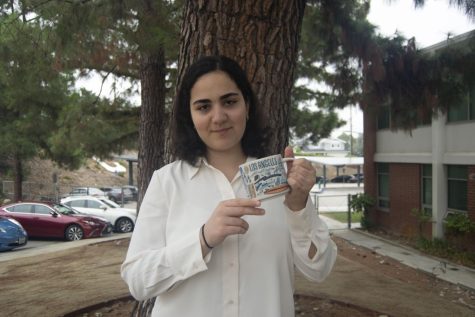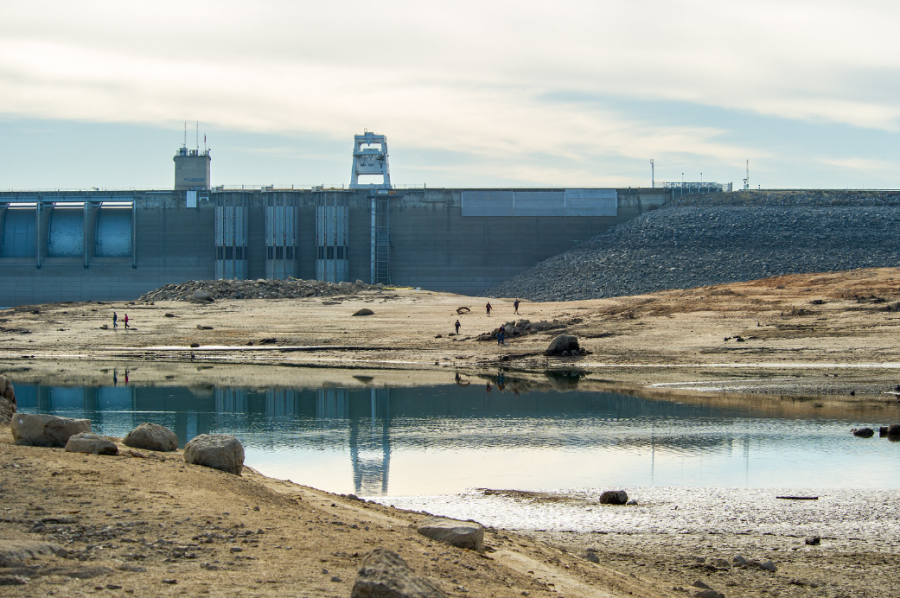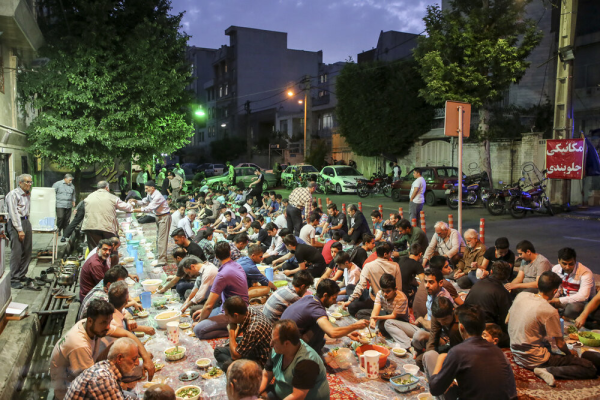How CA Can Conserve Water Amidst a Drought
Low water level and poor conditions at Folsom Dam in California.
For decades now, California’s water supply has been negatively impacted and continuously decreasing. Only eight months ago, 97% of the state was under severe drought conditions, and in tier 2 of its water shortage. The biggest influences have been rising temperatures, below average rainfall, and inadequate conservation by its citizens. However, the state experienced mass amounts of rainfall during the winter of 2022 and spring of 2023, decreasing its extreme drought condition areas. Though this is very beneficial for the state, in the long run, it can be altered with the coming summer heat and climate.
Governor Gavin Newsom only vocally tried to help the problem through warnings and calls for action through speeches but not direct policy changes. If finding reliable solutions is delayed, it will be harder to handle the hotter and drier climate, erasing a 10th of [California’s] water supply by 2040.
California’s water supply has been reliant on three major water sources: Lake Powell, Lake Mead and the Colorado River. During the summer of 2022, Lake Mead’s water level was around 1,040 feet, only 27% of its full capacity to carry. Beginning 2003, water levels began to drop rapidly, side canyons shortened, pale outlines of its walls were exposed, and the shores retreated, exposing the rivers’ dry floors (CNN Wire Service). Low water levels from the Colorado river at these two lakes are causing problems for running dams and hydropower infrastructure, under supplying water to nearby cities and counties (Colorado Public Radio).
To maximize water conservation in California, techniques such as surface runoff harvesting can be used to capture more rainwater for storage. In India, urban areas use recharge pits, trenches, and tubewells to capture rainwater (MyGov Blogs). The reservoirs can be located on the surface of lands or underground. Each homeowner can also capture some of that rainwater to water their lawn, garden or use for cleaning outside the house. Reservoirs should be protected by ensuring they are well repaired and able to hold the water for long amounts of time.
Water recycling can be implemented through the Greywater system which captures already used water and filters it, and sends it back to be used again for the same reason. “This would treat water captured from showers and bathtubs to a near-potable quality for reuse in toilet flushing. That alone reduces indoor water consumption by about 25 percent” (Washington Post). Water waste from washing hands or showers is not poor quality enough to be of harm if used for toilet flushing, since it won’t come in contact with the body. Alongside this, implementing toilets that take less than 1.5 gallons of water for flushing can also help to reduce water usage that will go in the waste anyways.
The state of California can implement the method of desalination, removing salt content from salinated sea water through the process of reverse osmosis. Fortunately, California has the Pacific ocean on its coast which gives it access to an abundant amount of seawater. Salt water is constantly available and the desalination plants on the coast would be pumping out fresh water at rapid rates. The filtered and clean water produced could be distributed to farmers for agriculture and residents.
Water is a scarce resource that must be protected at all costs for the survival of humanity and various ecosystems. Over time, better technology and people with innovative ideas can contribute to save and recycle more water. In the meantime, every resident of California has the power and the opportunity to work with their state government to value and conserve water.

Interests/hobbies? I like to play video games, paint my nails, read books, bike ride, and do photography.
Dream Destination? Philippines, Costa Rica...













